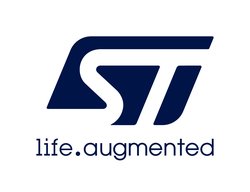NUCLEO-F334R8
Affordable and flexible platform to ease prototyping using a STM32F334R8T6 microcontroller.
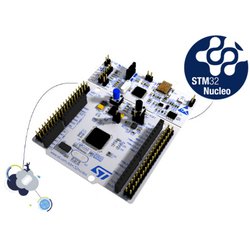
Overview¶
The STM32 Nucleo board provides an affordable and flexible way for users to try out new ideas and build prototypes with any STM32 microcontroller line, choosing from the various combinations of performance, power consumption and features.
The Arduino™ connectivity support and ST Morpho headers make it easy to expand the functionality of the STM32 Nucleo open development platform with a wide choice of specialized shields.
The STM32 Nucleo board does not require any separate probe as it integrates the ST-LINK/V2-1 debugger/programmer.
Microcontroller features¶
- STM32F334R8T6 in LQFP64 package
- ARM®32-bit Cortex®-M4 CPU with FPU
- 72 MHz max CPU frequency
- VDD from 2.0 V to 3.6 V
- 64 KB Flash
- 12 KB SRAM
- GPIO (51) with external interrupt capability
- 12-bit ADC (2) with 21 channels
- 12-bit DAC with 3 channels
- Analog comparator (3)
- Opamp
- RTC
- Timers (9)
- I2C (1)
- USART (3)
- SPI (1)
- CAN
Nucleo features¶
- Two types of extension resources
- Arduino Uno Revision 3 connectivity
- STMicroelectronics Morpho extension pin headers for full access to all STM32 I/Os
- On-board ST-LINK/V2-1 debugger/programmer with SWD connector
- Selection-mode switch to use the kit as a standalone ST-LINK/V2-1
- Flexible board power supply
- USB VBUS or external source (3.3 V, 5 V, 7 - 12 V)
- Power management access point
- User LED (LD2)
- Two push buttons: USER and RESET
- USB re-enumeration capability: three different interfaces supported on USB
- Virtual Com port
- Mass storage (USB Disk drive) for drag'n'drop programming
- Debug port
Nucleo pinout¶
Arduino-compatible headers¶
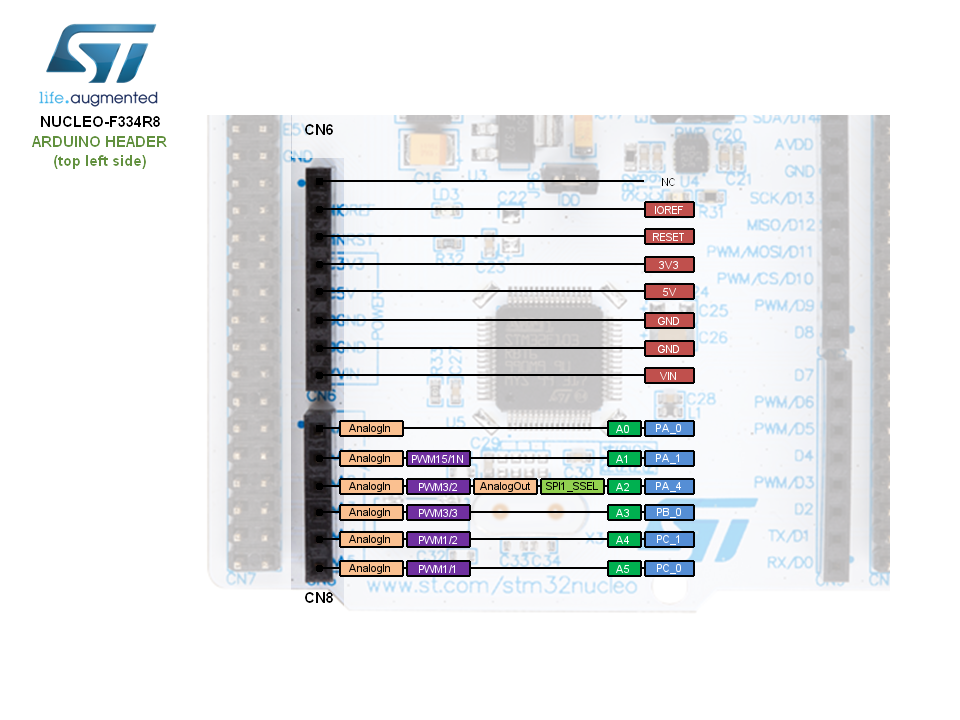
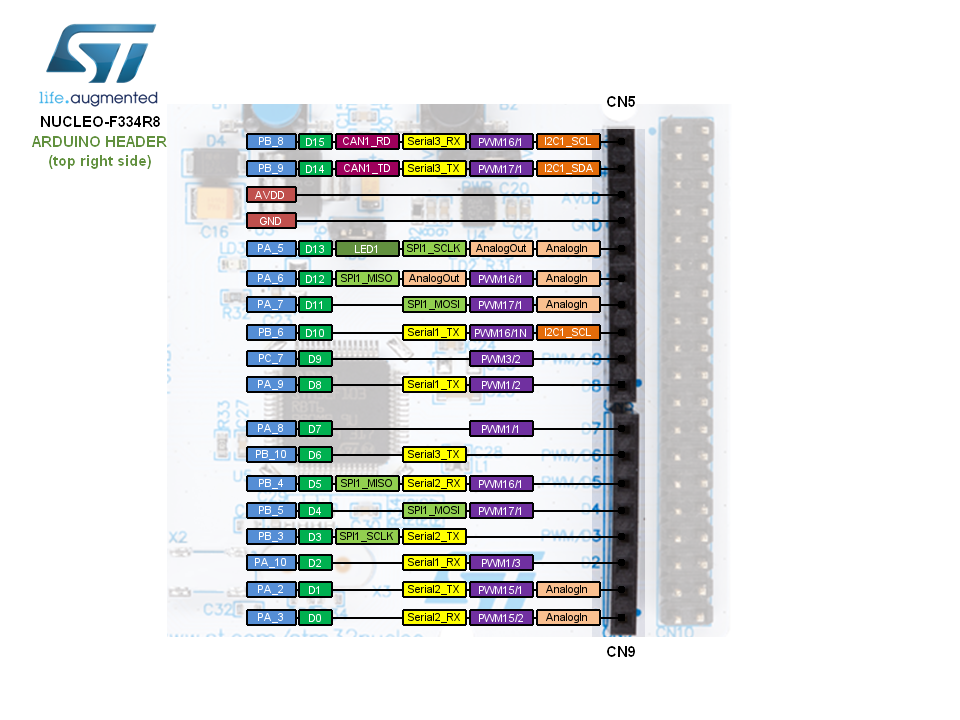
Morpho headers¶
These headers give access to all STM32 pins.
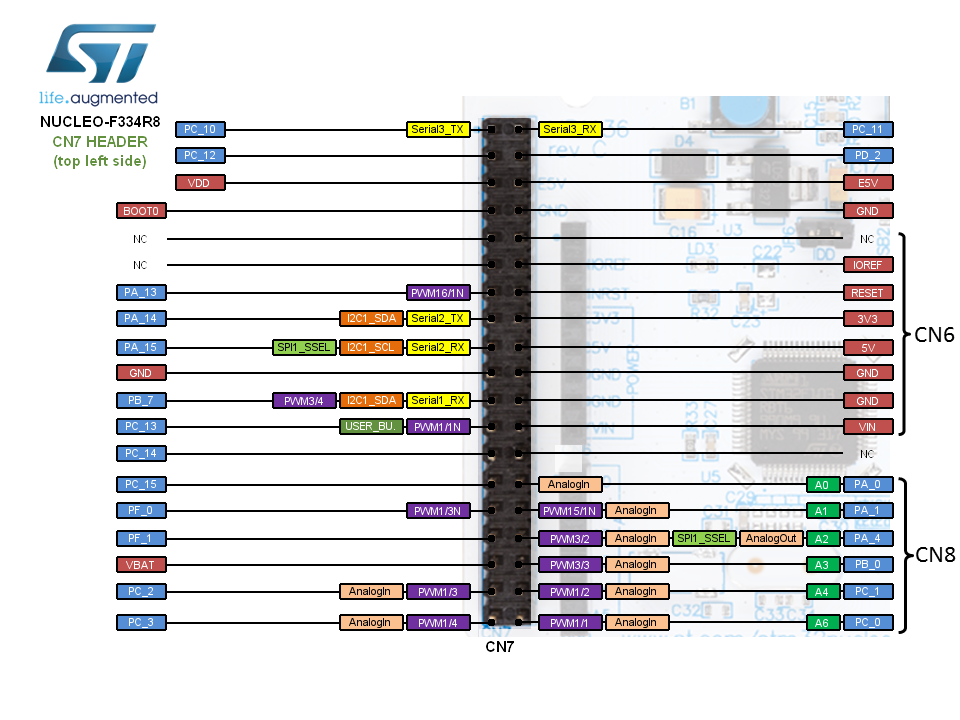
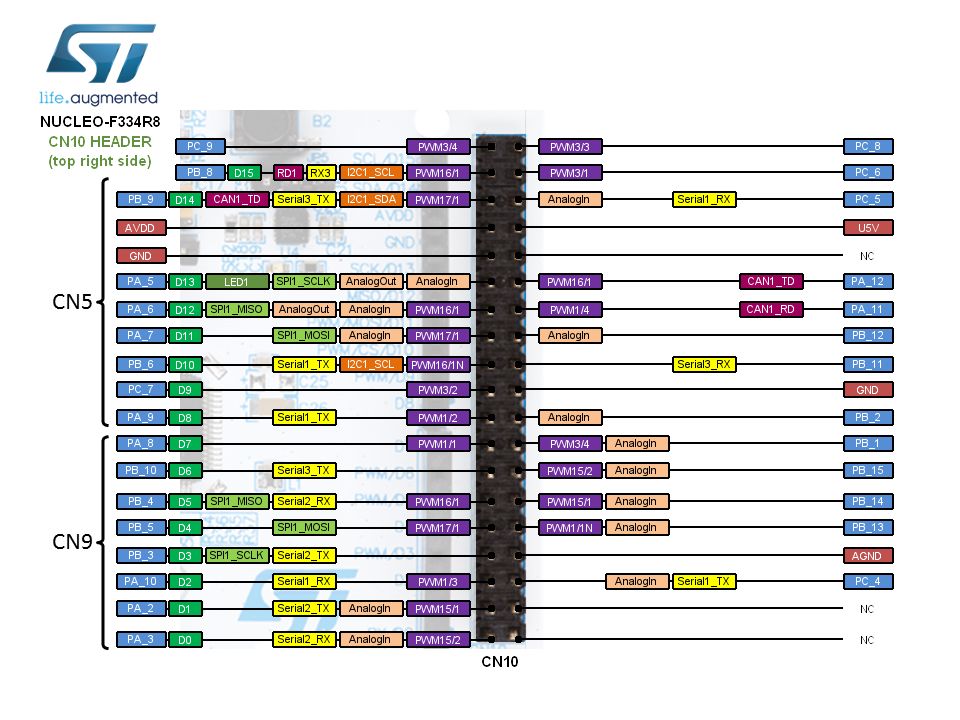
Information
Only the labels written in blue/white or green/white (i.e. PA_4, PB_5, A0, D14, LED1...) must be used in your code. The other labels are given as information (alternate-functions, power pins, ...).
You can find more details on the available pins and labels in the following files (link to the latest mbed-dev library version):
Supported shields¶
ST X-NUCLEO boards¶
Other Non-ST boards¶
See here.
Getting started¶
This video shows how to get started with ARM mbed Integrated Development Environment using STM32 Nucleo platform:
Nucleo ST-LINK/V2 driver installation and firmware upgrade
Technical references¶
For more information, please refer to:
Known limitations¶
The following section describes known limitations of the platform. Note that general issues are tracked into the mbed repository available on GitHub.
- On Nucleo 64-pins boards, the D0 and D1 pins are not available per default as they are used by the STLink Virtual Comm Port. More information HERE
Tips and Tricks¶
Find more information in ST WIKI pages.

